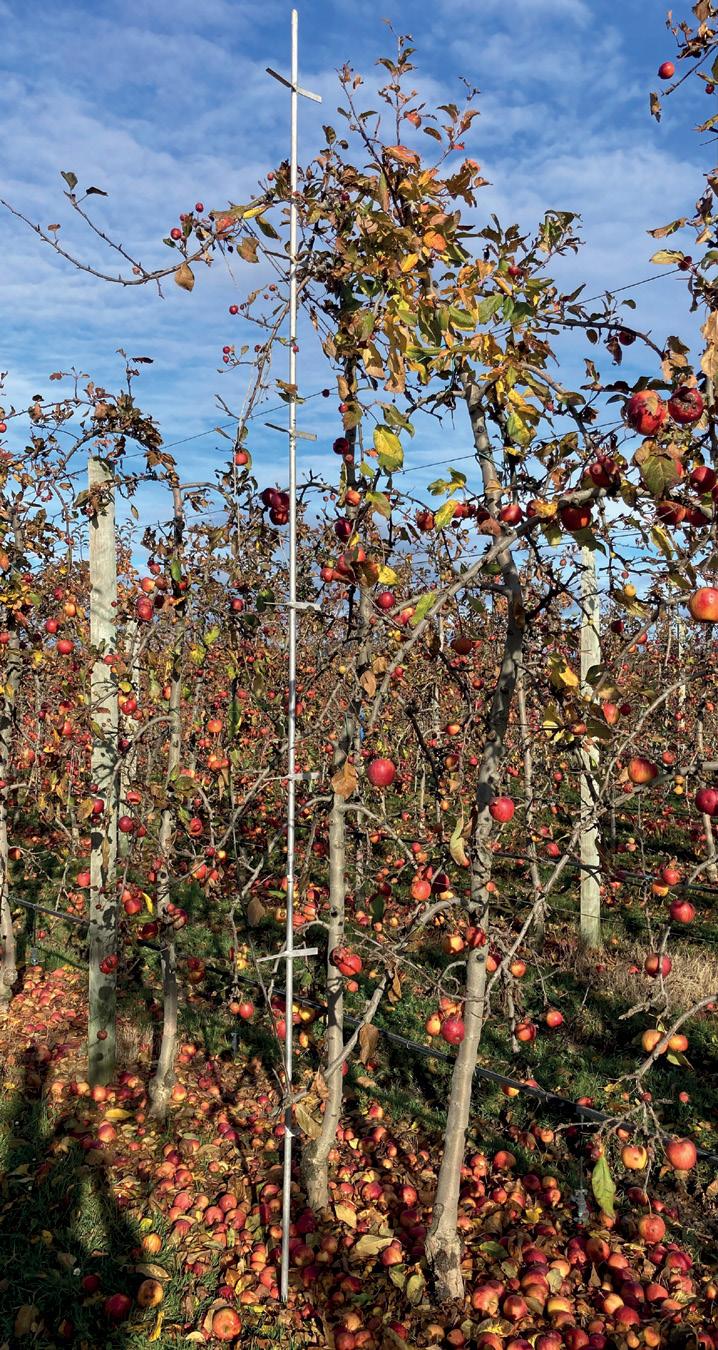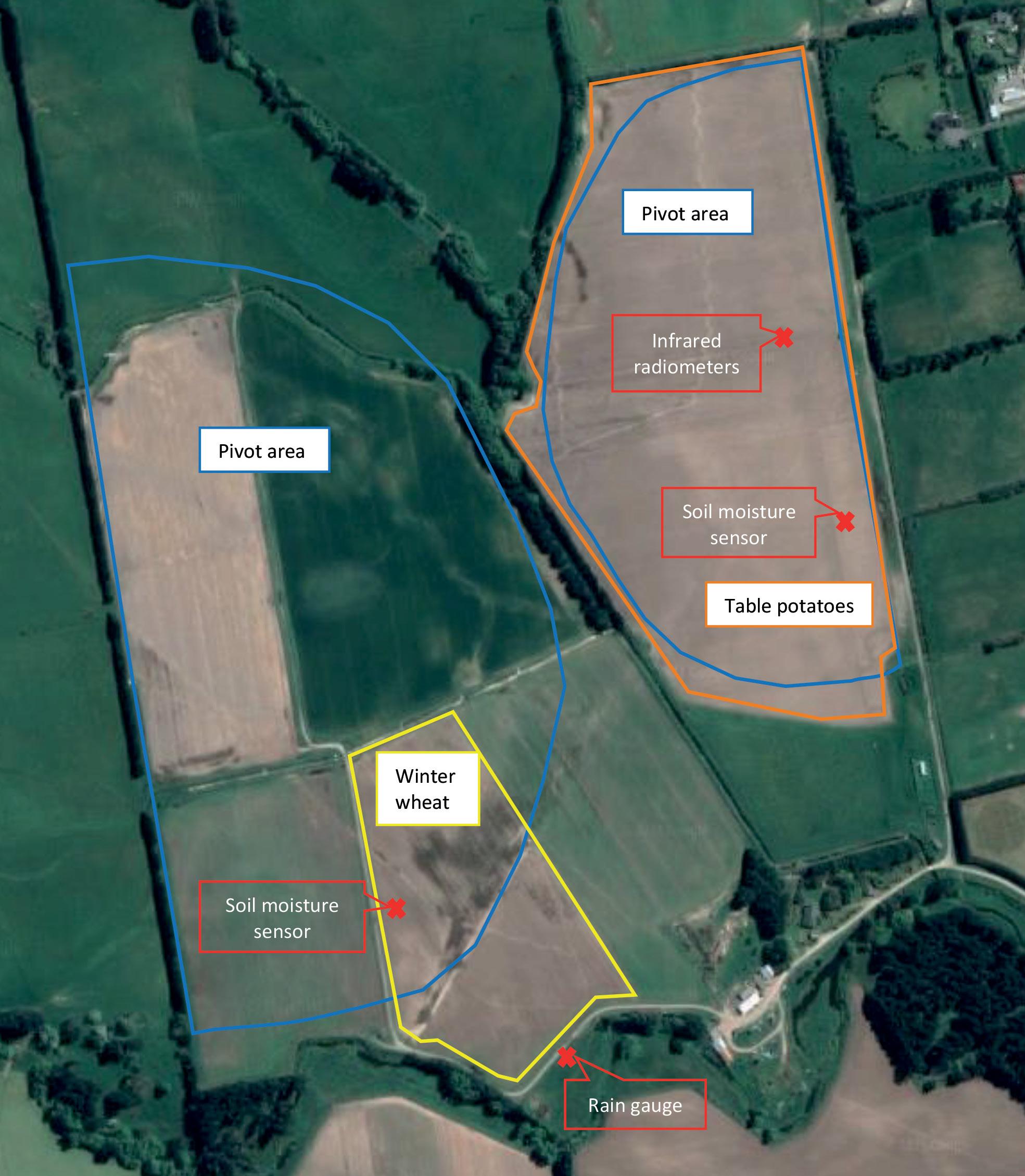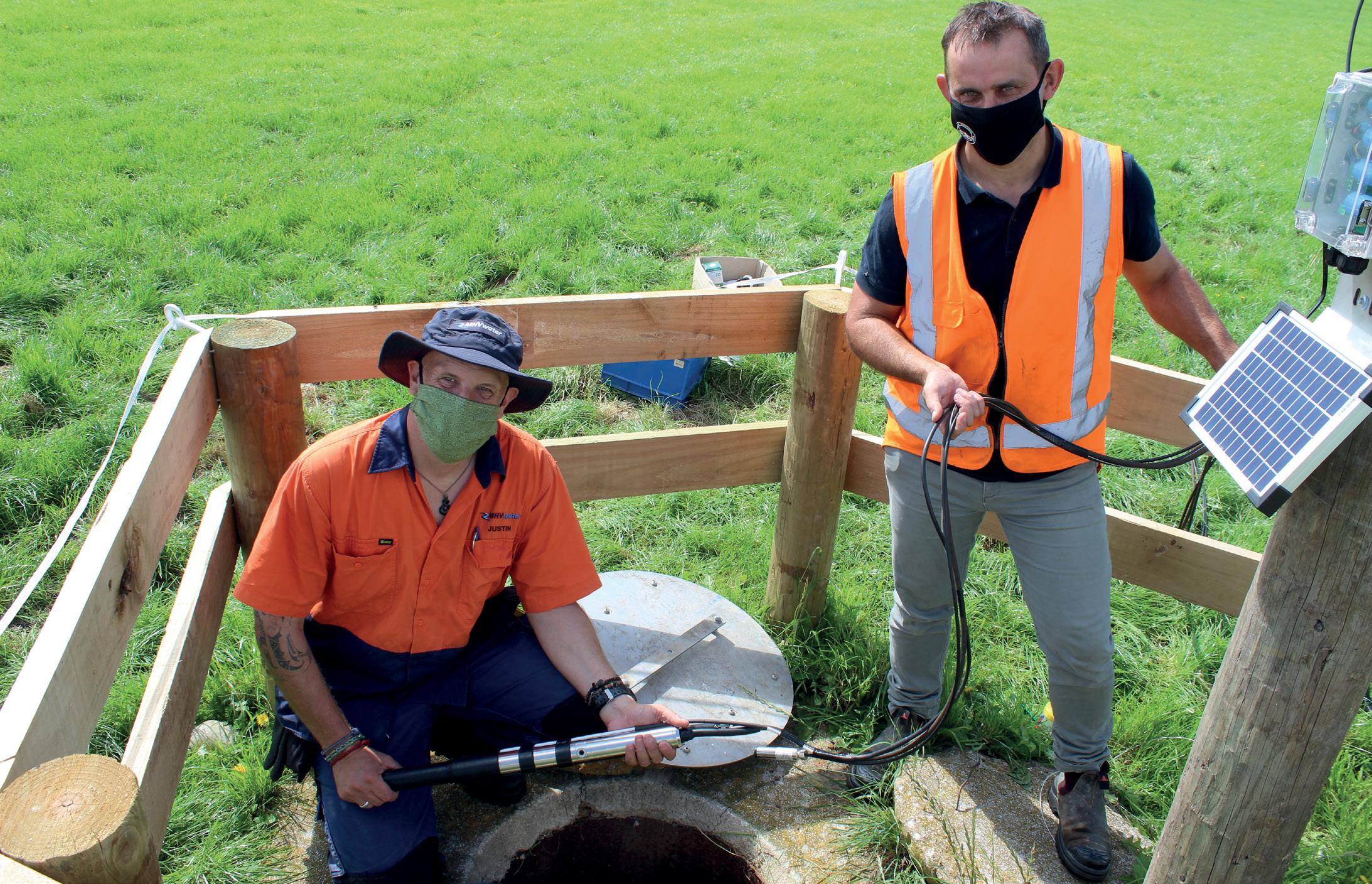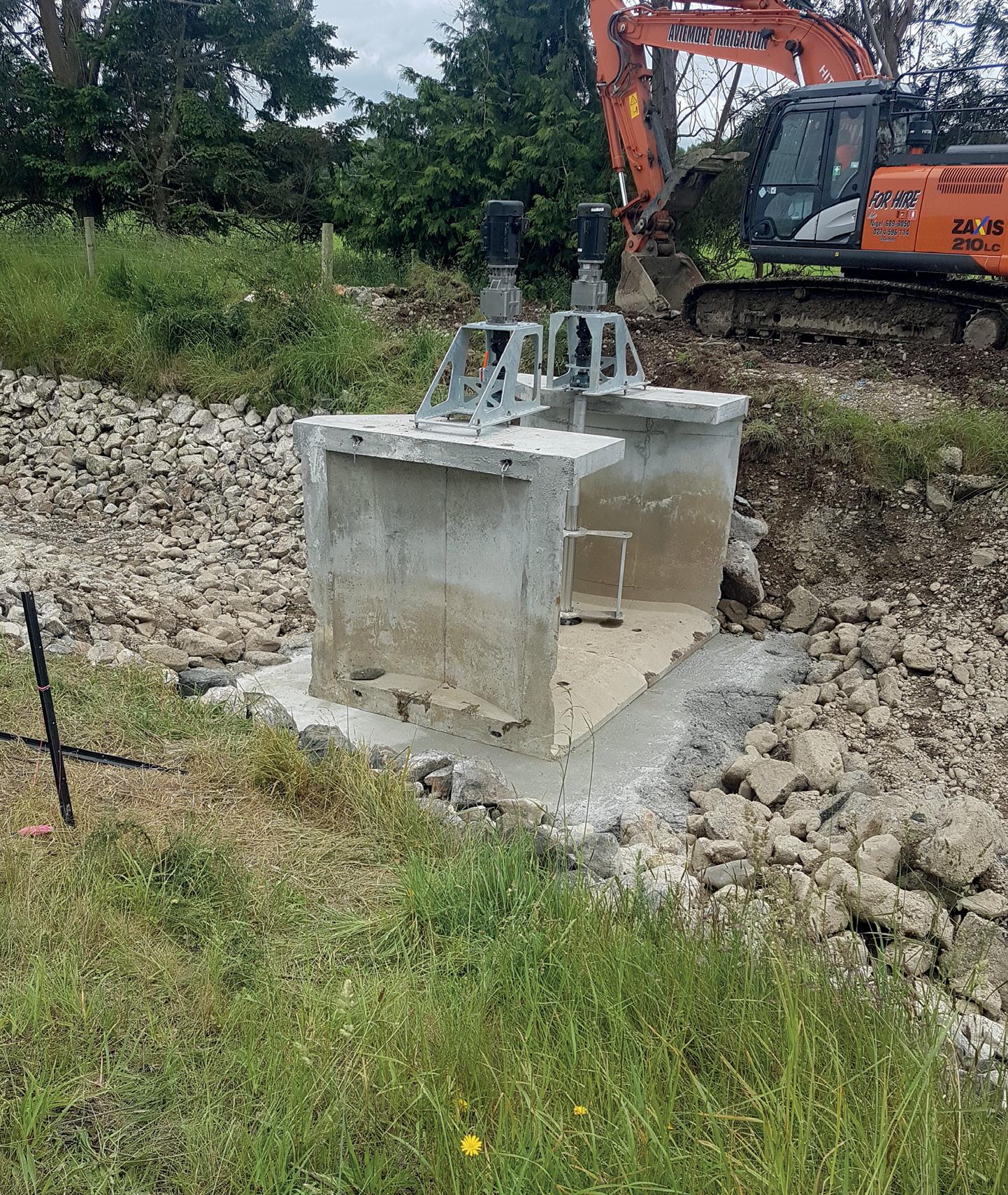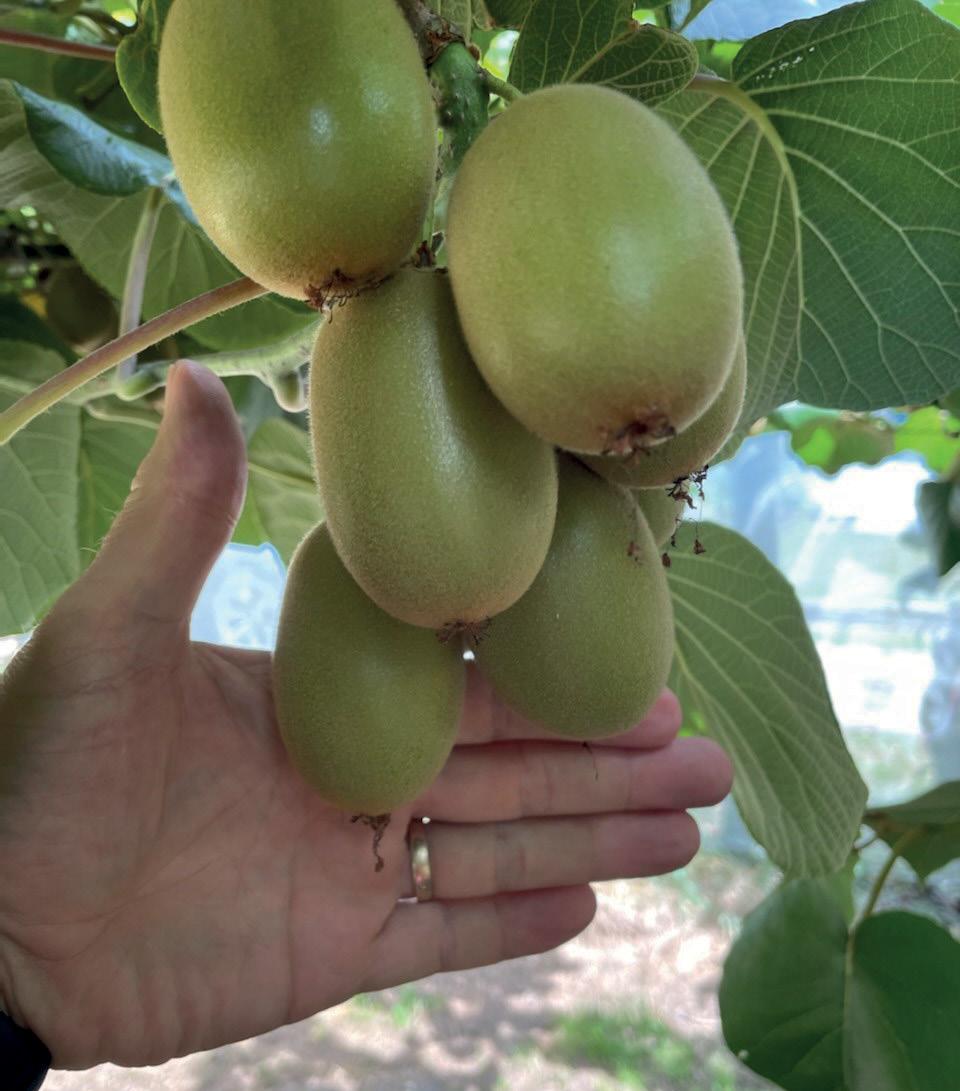
6 minute read
View from There
Technical matters
By Stephen McNally, Principal Technical Advisor, IrrigationNZ.
Advertisement
The 2021/22 irrigation season is bringing plenty of climate challenges to the irrigation sector, including extreme wind, rain and even fire events across our various irrigation regions. This is on top of constraints in the international and local equipment supply chains, which impact the ability to meet ongoing demands for new system development and the inevitable repairs that occur throughout the season.
For some design and service companies this busy development period comes on the back of two or more previous years of land use change driving the need for reliable irrigation water supply and rapid infrastructure implementation. The demand on the skilled people in our industry to keep up with the pace of development as well as respond to the legislative and regulatory environment leads to some significant resourcing gaps for employers.
IrrigationNZ is working across policy, technical and training activities that all interlink with the multifaceted activities of our members.
In this regular column I provide you with a summary of our outputs.
THE DAM SAFETY REGULATIONS IN NEW ZEALAND
The sharing of expert knowledge with MBIE (Ministry of Business, Innovation and Employment) on the draft Dam Safety Regulations is advancing steadily. These regulations aim to identify water storage structures that trigger embankment height and “held back” water volumes where the consequence of failure could impact human life, environment, cultural features, or critical infrastructure.
Through our technical input on calculation tools and risk assessment methods we hope to see this legislation land as efficient and effective, directed correctly to structures that genuinely need attention through implementation of dam safety improvements. However, we are confident pragmatism will see a sensible timeframe established for the adoption of the legislation and that low risk structures used in irrigation storage and distribution canals will be eliminated from any significant cost burden.
THE WATER SERVICES REGULATOR – TAUMATA AROWAI
The Department of Internal Affairs (DIA) is involved with an on-going assessment of how local authority entities manage their potable, waste and stormwater infrastructure assets and renewals program; commonly known as the Three Water Reforms. It is important to recognise the somewhat separate issue that the Water Services Bill is addressing for the supply of safe drinking water to rural communities from bores and other surface water systems. The Drinking Water regulations came into effect in November and IrrigationNZ is working actively with Taumata Arowai, the drinking water regulator, on how small rural water suppliers will need to address their safety obligations. Remember there are seven years until most existing small rural suppliers will need to be registered and compliant, which gives us the necessary time to ensure safe treatment or barriers systems are pragmatically designed and implemented.
NATIONAL ENVIRONMENT STANDARD FOR DRINKING WATER
The National Environmental Standard for Sources of Human Drinking Water (NES-DW) from the Ministry for the Environment opened for consultation on January 10 and closes on March 6. IrrigationNZ will be working with our members to make a submission on this important legislation that looks to manage risk within catchments where water is being taken for drinking supplies. This legislation is being developed in parallel with the activities of the DIA and Taumata Arowai but takes a different and apparently complementary approach to the impact of land-based activities on catchments.
There are a few things that will need our attention, particularly the possible restrictions on land-based activities (such as use of synthetic fertilisers and agrichemicals) and development of new groundwater bores within source
water risk management areas (SWRMA). The Ministry for the Environment (MfE) case studies indicate they see minimal impact on landowners, but we will need to consider this in practice. There is a suggestion that the NES-DW could be deemed across existing water take consents, i.e. applying the SWRMA approach and standards retrospectively.
The demarcation point between the two policies (Drinking Water Services and NESDW) is the physical point of water take; seemingly the NES-DW is looking “back upstream” to possible sources of contamination whereas the Taumata Arowai approach views the options for ensuring safety of drinking water in infrastructure “after the point of take”.
THE RESOURCE MANAGEMENT (MEASURING AND REPORTING OF WATER TAKES) REGULATIONS AMENDMENTS 2020
We are very pleased to confirm that the New Zealand Water Measurement Code of Practice has been updated and the November 2021 version was uploaded to the IrrigationNZ web page. This update corresponds to the 2020 amendments of the original 2010 regulations. The amendment introduced a staged timeline requiring holders of consents to take and electronically submit their records to their council. The work program coordinated for IrrigationNZ by Vicky Bloomer of Drop Consulting brought together the contributions and expert opinions of MfE, regional councils and Accredited Blue Tick companies to review the refreshed Code of Practice. This guidance document helps to underpin the principles of the Blue Tick accreditation program to ensure expectations of all parties operating in this area are clear.
FISH SCREENS ON IRRIGATION WATER INTAKES
A further significant milestone has been reached with the installation in early December of the first demonstration screens at a site in the Awakino Valley. A Bossman screen was installed, and initial fish exclusion trials conducted over the first few days of the system settling in period. While this is early days for the particular installation site, it was possible to make some early assessments of effectiveness, and the project team is pleased with the indicators. However, as with all new systems, some minor recommendations were made for remediation on work that was completed, largely on the way the screen worked in conjunction with the intake and bypass set up.
Subject to further fish trials, and after microscope inspection, the main observation was that no fish went into the irrigation water and no fish were injured or damaged by moving through the screen set up.
The installation team, led by Bridget Pringle, reported it was a challenging but rewarding couple of days in the field, manoeuvring rocks in the channel to get the water flowing effectively, and capturing the various sizes and species of fish required for the trial.
The farmers were very engaged and brought their kids to investigate progress each day – they love the river and are very proud to be part of the project and to support its intent. Further trials are being scheduled at the site over the course of the irrigation season.

The Bossman screen being settled into the channel. Initial fish exclusion trials with the water starting to flow.
FERTIGATION, OR THE ADDITION OF SOLUBLE NUTRIENTS TO IRRIGATION WATER
Many irrigators are considering this technology to meet the restrictions on synthetic nitrogen use in what is known as the 190kg N cap. IrrigationNZ and its industry partners have now finalised the analysis of two years of field trial results and incorporated this material into an updated fertigation guidance document. This document, along with an online training module launched in November 2021, will help with the decision processes farmers and designers need to address in adopting this technology. The guidance provides insights into matters such as chemical compatibility, backflow prevention, and injector selection options.
IrrigationNZ was one of the industry bodies that provided expert information to the Ministry for Primary Industries (MPI) officials in the Water Availability and Security (WAS) initiative. The full WAS report was launched by MPI along with information sessions to many interested parties across regions and productive sectors in New Zealand. Water storage can be demonstrated to have a major benefit on freshwater management, giving the ability to underwrite reliable food and fibre production. Key to establishing efficient water storage and situation infrastructure is focusing on efficiency of water use, demand management, and ensuring storage is supported within the regulatory context.



